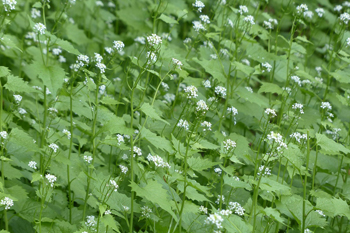In part 3 of our ‘Plants do good’ series, we look further into the variety of herbal plants. Some you may even find in your garden!
Medicinal and Herbal Plants
Dandelion
The dandelion is one of the easiest plants to recognise. Their striking yellow buds bloom in spring, which is the best time to eat them as they are less bitter. The flower is found across all continents and has been gathered for food since prehistory, but varieties cultivated for consumption are mainly native to Eurasia.
Kashmiri, Slovenian, Sephardic, Chinese and Korean cuisines are commonly known for using the dandelion leaves and buds in their dishes and have done so for centuries. Meanwhile, flower petals and other ingredients (usually citrus) are used to make dandelion wine. A fact you may not know is that dandelion leaves are a good source of vitamins and minerals. They contain vitamins A, C and K, and are good sources of calcium, potassium, iron and manganese.

Elderflower
This pretty plant is used across Europe for a number of different purposes. In cuisine, French, Austrians and Central Europeans produce elderflower syrup, made from extract of the flowers’ blossoms. Other countries across the continent also use a similar method to making the syrup which is diluted in water and used as a drink or flavouring. Countries such as Germany, Austria and Italy use the berries and flowers to make yoghurts, pies and relishes, but a more unusual dish is known as “Hollerküchel”. This involves coating the flower clusters of the elderberry with batter, frying them and then serving them with a sugar and cinnamon topping – something we’d love to try!

One thing you may not know is that Coca-Cola was inspired to create their own elderflower-based drink, Fanta Shokata, from a long-running tradition in Romania where they produce a traditional soft drink called “socat?”. Between the months of May and June, Romanians let the flowers macerate with water, yeast and lemon for 2-3 days. Fermentation is then complete by adding the beverage to a closed, pressure-proof bottle to produce a fizzy drink.
In terms of its medicinal purposes, black elderberry has been used for hundreds of years. Preliminary studies have demonstrated that elderberry may have measurable effects in treating the flu, alleviating allergies and boosting overall respiratory health. The elderflowers’ benefits to health and its sweet taste also make it an ideal herbal tea and cordial.
Garlic mustard
The garlic mustard plant grows year-round. Leaves can be eaten in any season, but during hot summer months, they are known to have a bitter taste. Flowers can be added to salads, while the horseradish-flavoured roots can be collected and eaten during early spring and late autumn, when flower stalks aren’t present.

Herb Robert
Also known as Red Robin, Stocksbill or Dove’s Foot, the entire plant of the Herb Robert is edible. The flowers, leaves and roots can be dried and stored to be used as herbs in tea as a nutrient booster. In traditional herbalism, the plant was used as a remedy for toothache and nosebleeds. It was also carried to attract good luck and to enhance fertility due to its analogical association with storks.
The smell of the plant is said to repel mosquitoes if rubbed on the body, while the entire plant repels animals like rabbits and deer. This could prove useful in protecting your garden!


